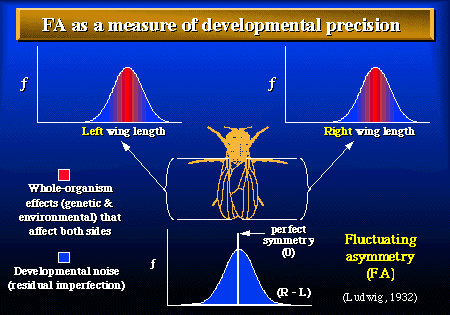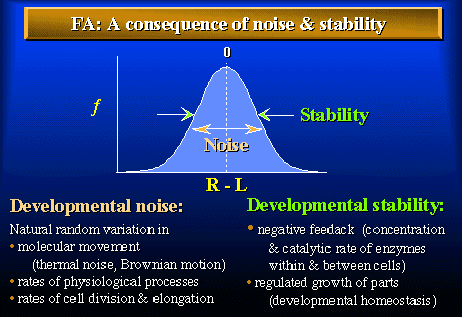
Imagine an organism that is normally bilaterally symmetrical. What happens if we measure the right and left sides very carefully? Are they identical?

Even in normally bilaterally symmetrical animals, very small differences exist between sides. Whether we detect them or not depends entirely on how precise our measurements are.
If measured accurately enough, these tiny deviations from symmetry allow us to quantify developmental precision: how accurately does the same genetic program in the same individual produce mirror-image structures?
Collectively these tiny differences often exhibit what looks like random variation (the bell-shaped curve) about a mean of zero (perfect symmetry), and are called fluctuating asymmetry (FA). For fluctuating asymmetry, therefore, the average deviation from symmetry (e.g., mean|R-L|, sometimes called the average absolute asymmetry) provides a simple and sensible measure of developmental precision. Many factors appear to affect the level of developmental precision in nature.
Unfortunately, tiny deviations from symmetry may also exhibit other patterns that invalidate their use as a measure of developmental precision.
Much remains to be learned about why the right and left sides of a symmetrical organism are not perfect mirror images of each other.

What we observe as small, random deviations from perfect symmetry probably reflects the interplay between two very different classes of phenomena:
The balance between these two opposing processes determines how large the fluctuating asymmetry (FA) is.
Back to Asymmetry Page
A.R. Palmer
Home Page
Original material on this page copyright © 1997-2002 by A. Richard Palmer. All rights reserved.
(revised Nov. 13, 2002)